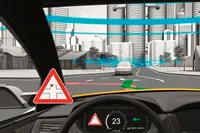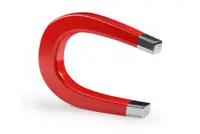Electronics News
Archive : 12 September 2015 год
 Continental will presented a left-turn assist based on Vehicle-to-X (V2X) technology in the outdoor area of the New Mobility World at the Frankfurt Motor Show (IAA). The technology issues an audible and visual warning to alert the driver of an impending collision due to the presence of a hidden approaching vehicle during a left-turn manoeuvre. Automatic intervention is only triggered if the driver fails to observe the warning despite the increasing probability of an accident.
Continental will presented a left-turn assist based on Vehicle-to-X (V2X) technology in the outdoor area of the New Mobility World at the Frankfurt Motor Show (IAA). The technology issues an audible and visual warning to alert the driver of an impending collision due to the presence of a hidden approaching vehicle during a left-turn manoeuvre. Automatic intervention is only triggered if the driver fails to observe the warning despite the increasing probability of an accident.
Other functions that Continental offers with its V2X technology include the Electronic Brake Light and the Roadworks Assistant. The Electronic Brake Light informs the driver that a vehicle further ahead in traffic is braking, even if it cannot yet be seen by the driver. This information can be valuable, in particular on winding country roads. If a vehicle is approaching roadworks, the Roadworks Assistant supplies information about their location, length and also recommends the lane the driver should choose to ensure optimum traffic flow.
“Our aim is to reduce the number of accidents significantly or to eliminate them altogether. With V2X, it is possible not just to ‘see around the corner’, so to speak, but also to detect hazards early on, before they are visually perceived. By issuing appropriate warnings, through cooperative assistance, and right up to an intervention by the vehicle, we want to eliminate these hazards, before the driver notices them or the sensors detect them,” explained Dr. Bernhard Klumpp, Head of the Passive Safety & Sensorics Division at Continental.
Author
Tom Austin-Morgan
Source: www.newelectronics.co.uk
 Researchers from Corning Incorporated, the Physics Department at the University of Nebraska, the US Army Research Laboratory and the Naval Research Laboratory have made steps in developing a new magnetic memory technology, which is less susceptible to corruption by magnetic fields or thermal exposure than conventional memory. The findings open up a new approach to a variety of applications from high-density radiation hard memory suitable for space travel to more secure ID cards.
Researchers from Corning Incorporated, the Physics Department at the University of Nebraska, the US Army Research Laboratory and the Naval Research Laboratory have made steps in developing a new magnetic memory technology, which is less susceptible to corruption by magnetic fields or thermal exposure than conventional memory. The findings open up a new approach to a variety of applications from high-density radiation hard memory suitable for space travel to more secure ID cards.
Magnetic permeability - an intrinsic property of 'soft' ferromagnets - is not changed by exposure to a magnetic field, unlike conventional magnetic memory, and therefore information stored by programming changes in the magnetic permeability of each memory bit will not be erased by exposure to magnetic fields.
"It was a big step just coming up with the idea of using magnetic permeability to store information, and coming up with a practical way of getting the memory near the sensor so that it can be read" explained Dr Alan Edelstein, an author on the paper. "I was surprised and pleased that we could make this approach work."
The technique used thermal heating with a laser to crystallise amorphous regions of ferromagnets. As the crystalline areas have a lower permeability than the amorphous areas, information can be read from the memory by reading the changes in a probe magnetic field.
With credit cards, RF chips have offered a more stable form of memory, but these can be read by a passer-by using an RF reader. As the probe magnetic field needs to be in close vicinity to the memory, this technique offers a more secure technology.
The researchers are now working on a technique to make the memory re-writable. "We've demonstrated the ability to rewrite bits for a read/write memory, and hope to publish the results soon." concluded Edelstein.
Author
Tom Austin-Morgan
Source: www.newelectronics.co.uk

